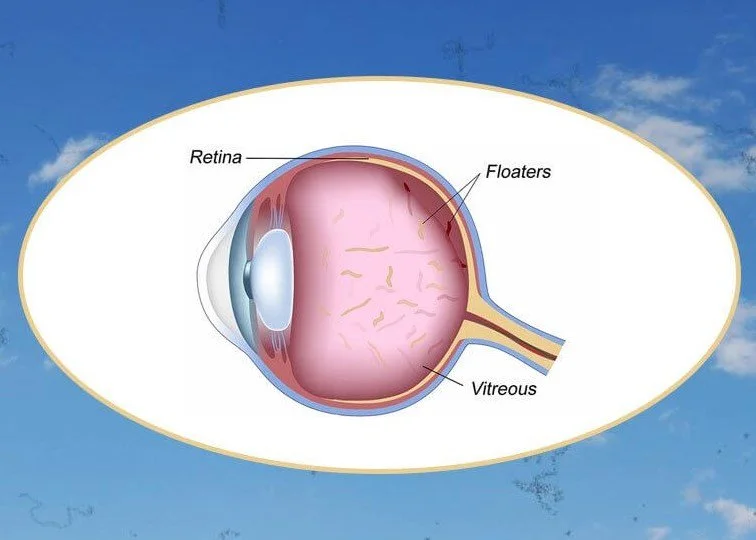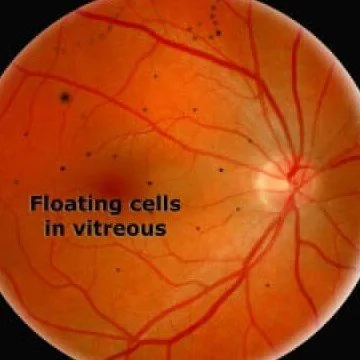What are Floaters and Can They be Treated?
Have you ever noticed what looks like tiny flecks, a black spot, ring, or strings in your vision? These shadowy spots may come and go during the day as you move your eye, and are particularly noticeable when looking at bright plain backgrounds, like a white wall or the sky. While they may not affect the clarity of your vision, they can be highly irritating. These are commonly known as floaters, because they seem to do just that: float around in your vision.
The majority of floaters are caused by changes in the eye’s vitreous that occur with aging, and are not cause for concern. The vitreous is a jelly-like substance in the eye that helps the eye maintain its round shape. Millions of fibers in the eye are intertwined through the vitreous and connect to the retina, which is where the nerves that are sensitive to light are found in the eye. As we age, the vitreous becomes more liquid and shrinks, this allows the tiny fibers to clump together and pull away from the retina. As these pull, they can break, and cause the vitreous to detach from the retina, causing a new floater, or posterior vitreous detachment (PVD).
Although most floaters are not sight-threatening, there are signs to be aware of that can signify the need for urgent medical care. If you notice sudden flashes of light associated with a large number of new floaters, or experience vision loss that seems like a shade being pulled across your field of vision, you should seek medical care immediately as these can be symptoms of sight-threatening emergencies, such as a retinal tear or a retinal detachment.
The only way to have your floaters evaluated, and diagnose a PVD, is to have a comprehensive dilated eye examination. Observation is adequate for PVDs in the majority of cases and is the most common recommendation. However, not all floaters are created equal, and patients who continue to struggle with their floaters may be searching for treatment options. One option for treatment of PVDs is YAG laser vitreolysis. During this quick, painless, and safe procedure, Dr. Tendler utilizes a laser to fire a small burst of energy at the floater. The energy converts the collagen and hyaluronic molecules of the floater into a gas, which is then reabsorbed into the eye. Most patients report a 60-90% improvement in their symptoms after one treatment, and this method can be repeated if needed. Prior to performing the laser treatment, each patient is seen and evaluated by Dr. Tendler to ensure that the floater appears to be amenable to this treatment option and that expectations are established. If the PVD does not appear to be manageable by the YAG laser, patients may need to be referred to a colleague of Dr. Tendler’s who specializes in vitrectomy, or removal of the vitreous. The video below demonstrates how floaters can be treated.
If you are troubled by floaters, please contact our office to schedule a consultation to see if a YAG vitreolysis treatment performed by Dr. Tendler may be a treatment option for you.
Yag Vitreolysis



